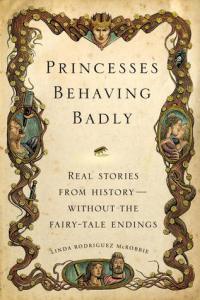
by fljustice | Nov 22, 2013 | Biographies, Books, History, Reviews, Wonderful Women
Princesses Behaving Badly: Real Stories from History without the Fairy-Tale Endings
by Linda Rodriquez McRobbie
“Once upon a time, there lived a beautiful princess who wasn’t afraid to cheat, deceive, seduce or murder anyone who got in her way.”
 I like these kinds of books—collections of short bios of (mostly) unknown women who are remarkable for doing daring/unusual things down through history. I have one on women at sea; several on women warriors; others on women explorers, mathematicians, and scientists. They generally follow a pattern of one to two page biographies written in a breezy, modern style emphasizing the outrageousness (for her time) of the woman’s actions.
I like these kinds of books—collections of short bios of (mostly) unknown women who are remarkable for doing daring/unusual things down through history. I have one on women at sea; several on women warriors; others on women explorers, mathematicians, and scientists. They generally follow a pattern of one to two page biographies written in a breezy, modern style emphasizing the outrageousness (for her time) of the woman’s actions.
Why do I like these kinds of books? To be honest, they’re snack food—light fluffy reads that give me a break from heavy turgid research books. They also remind me that—despite what the history books tell us—some women in every era, somewhere in the world, were doing remarkable things. The majority (like today) lived ordinary lives, but a few women always stood out and lived extraordinary ones. I like learning about them and being inspired to tell their stories. This kind of book is a good starting point for any historical novelist looking for inspiration.
(more…)
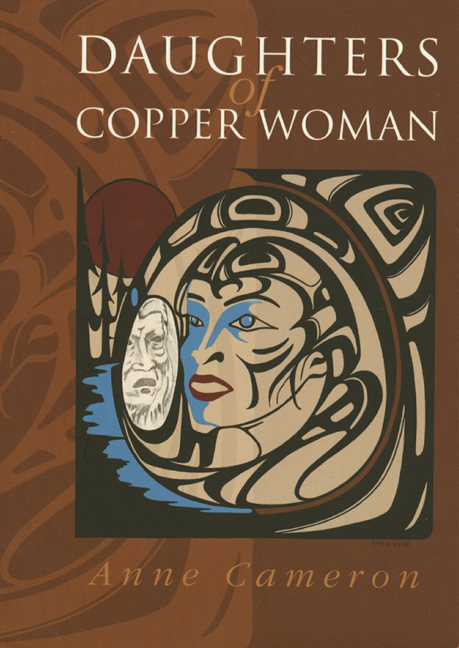
by fljustice | Jul 1, 2013 | Books, History, Reviews, Wonderful Women
Daughters of Copper Woman
by Anne Cameron
From the opening story “Copper Woman”:
 And then the Creator, who is neither male nor female, man nor woman, but both, and something more than either…took the shells of the sea and the minerals of the rocks and fashioned a skeleton…took the salt water of the ocean and made from it blood…took handfuls of dirt and on the skeleton fashioned a body, which was then encased in skin, made from the skin of the Creator and the same color as copper…she became First Woman, she became Copper Woman.
And then the Creator, who is neither male nor female, man nor woman, but both, and something more than either…took the shells of the sea and the minerals of the rocks and fashioned a skeleton…took the salt water of the ocean and made from it blood…took handfuls of dirt and on the skeleton fashioned a body, which was then encased in skin, made from the skin of the Creator and the same color as copper…she became First Woman, she became Copper Woman.
Sometimes a book grabs me by the heart and won’t let go. Daughters of Copper Woman is one of those books. I’ve been fascinated by myths, legends and folk tales since I was small. I devoured the children’s books about Greek myths and quickly moved on to Norse legends and Grimm’s tales. For the most part I enjoyed them as adventure and hero stories filled with fantasy, but (except for fables) little in the way of morals or values. I have an informal collection of the classics, plus books from the Middle East, Africa and Asia. Knowing my passion, it’s not surprising my daughter gave me this book for Mother’s Day.
My question: “How the hell did I miss this book for the last thirty-two years?” (more…)

by fljustice | Mar 26, 2013 | Essays/Research, History, Wonderful Women, Writing
Where Are All the Strong Women?
 Readers of this blog know I like to highlight fiction and non-fiction that present capable women with strong personalities. I read a post in a forum recently that intrigued me. The person was looking for historical fiction recommendations, but “none of those anachronistic modern women dressed up in historical costumes crap.” I don’t think s/he was disparaging time travel fiction and, yes, I’ve read a few stories where the women seem to have more modern sensibilities than might be warranted. But not all strong females in historical fiction are anachronistic. I’ve read other blog posts by historical fiction writers also deploring recent criticism about strong women described by readers as “too modern” in spite of ample historical evidence that women did and thought as the writers wrote them. Where does the dissonance come from? Why would a reader think a woman couldn’t be a doctor in Late Antiquity, captain a whaling ship, or teach men to fly planes during WWII — all documented events?
Readers of this blog know I like to highlight fiction and non-fiction that present capable women with strong personalities. I read a post in a forum recently that intrigued me. The person was looking for historical fiction recommendations, but “none of those anachronistic modern women dressed up in historical costumes crap.” I don’t think s/he was disparaging time travel fiction and, yes, I’ve read a few stories where the women seem to have more modern sensibilities than might be warranted. But not all strong females in historical fiction are anachronistic. I’ve read other blog posts by historical fiction writers also deploring recent criticism about strong women described by readers as “too modern” in spite of ample historical evidence that women did and thought as the writers wrote them. Where does the dissonance come from? Why would a reader think a woman couldn’t be a doctor in Late Antiquity, captain a whaling ship, or teach men to fly planes during WWII — all documented events?
I blame school history books. The protagonist in my novel, Selene of Alexandria is a young woman who wants to become a physician in fifth century Alexandria — not a “healer” or midwife — a trained and apprenticed physician. There is ample written and archaeological evidence of women physicians through the ages, including this period. But if you don’t look outside the traditional history texts, you wouldn’t know that. (more…)

by fljustice | Feb 26, 2013 | Biographies, Books, History, Reviews, Wonderful Women
Eighty Days: Nellie Bly and Elizabeth Bisland’s History-Making Race Around the World
by Matthew Goodman
 From the back cover:
From the back cover:
“On November 14, 1898, Nellie Bly, the crusading young female reporter for Joseph Pulitzer’s World newspaper, left new York City by steamship on a quest to break the record for the fastest trip around the world. Also departing from New York that day—and heading in the opposite direction by train—was a young journalist from The Cosmopolitan magazine, Elizabeth Bisland. Each woman was determined to outdo Jules Vern’s fictional hero Phileas Fogg and circle the globe in less than eighty days. A vivid real-life re-creation of the race and its aftermath, this is history with the heart of a great adventure novel.”
I delight in spotlighting the lives and accomplishments of women in past times—particularly “ordinary” women doing extraordinary things. Eighty Days is a true adventure story about two young female journalists who traveled around the world—in opposite directions—alone, during the heart of the Victorian Age. Matthew Goodman does an excellent job bringing these two women to life, filling in the background of exotic locations and Victorian attitudes as they make their remarkable journey—not just around the world, but through life. (more…)
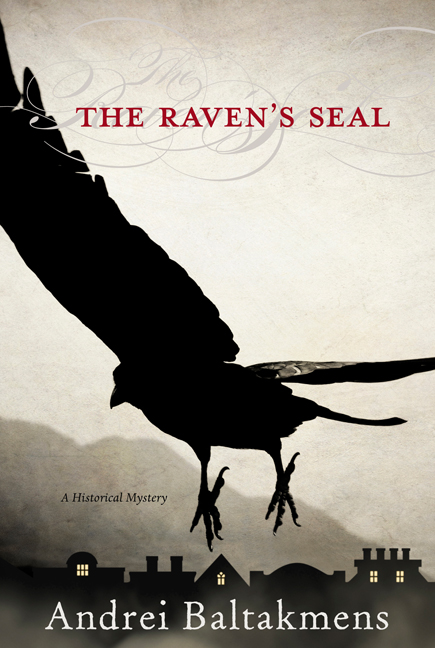
by fljustice | Nov 29, 2012 | Books, Fiction, Free stuff, Guest Post, History
Guest Post: Early-Modern Crime (and Punishment) in “The Raven’s Seal”
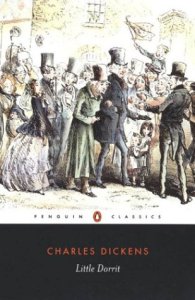 I’m back from New Zealand and–totally by coincidence–I’m hosting a New Zealand author. As readers of this blog know, I’m a Dickens fan. I can’t get enough of his quirky characters, dark settings, twisty plots and–yes!–even his social preaching. One of my favorites, Little Dorritt (reviewed here) features a debtor’s prison which is just as much a character as its human inhabitants. That’s why I was so pleased to score a copy of The Raven’s Seal a historical mystery written in the style of Dickens. The author Andrei Baltakmens is a Dickens scholar and plants an eighteenth-century prison in the heart of his novel. The gaol (jail for us in the US) broods over the prose and lurks in the background infusing the story with its dark presence. From the first paragraph:
I’m back from New Zealand and–totally by coincidence–I’m hosting a New Zealand author. As readers of this blog know, I’m a Dickens fan. I can’t get enough of his quirky characters, dark settings, twisty plots and–yes!–even his social preaching. One of my favorites, Little Dorritt (reviewed here) features a debtor’s prison which is just as much a character as its human inhabitants. That’s why I was so pleased to score a copy of The Raven’s Seal a historical mystery written in the style of Dickens. The author Andrei Baltakmens is a Dickens scholar and plants an eighteenth-century prison in the heart of his novel. The gaol (jail for us in the US) broods over the prose and lurks in the background infusing the story with its dark presence. From the first paragraph:
“The Old Bellstrom Gaol crouched above the fine city of Airenchester like a black spider on a heap of spoils. It presided over The Steps, a ramshackle pile of cramped yards and tenements teeming about rambling stairs, and glared across the River Pentlow towards Battens Hill, where the sombre courts and city halls stood. From Cracksheart Hill, the Bellstrom loomed on every prospect and was glimpsed at the end of every lane.”
Many thanks to Andrei for providing a guest post on eighteenth-century crime and punishment and to his publisher Top Five Books for providing a giveaway copy (details at the end of the post.) (more…)
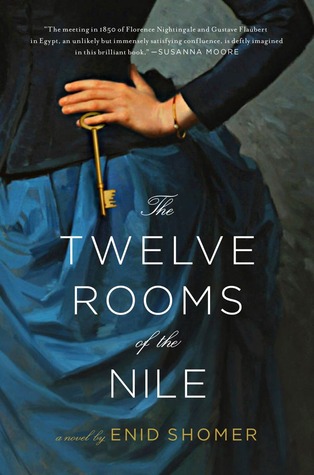
by fljustice | Oct 17, 2012 | Books, Fiction, Free stuff, Guest Post, Wonderful Women
Guest Post: Enid Shomer on “The Twelve Rooms of the Nile”
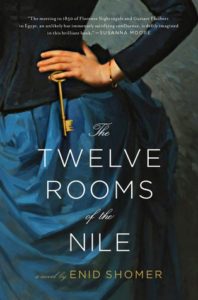 I just finished The Twelve Rooms of the Nile, a novel about the imagined meeting of Florence Nightingale and Gustave Flaubert when they both traveled the fabled river–before they became famous. It’s a lovely literary effort with wonderful insights into two intriguing characters. I’m pleased to host a guest post by the author Enid Shomer where she tells us how she came to know both these remarkable people and write about them. Ms. Shomer’s short fiction and poetry has appeared in The New Yorker, The Atlantic and The Paris Review among other publications. This is her first novel. Thanks to her publisher Simon and Schuster for providing two copies of this book for a giveaway (details at the end of the post.) If you want to learn more about Ms. Shomer and her writing, please visit her website. Enjoy! (more…)
I just finished The Twelve Rooms of the Nile, a novel about the imagined meeting of Florence Nightingale and Gustave Flaubert when they both traveled the fabled river–before they became famous. It’s a lovely literary effort with wonderful insights into two intriguing characters. I’m pleased to host a guest post by the author Enid Shomer where she tells us how she came to know both these remarkable people and write about them. Ms. Shomer’s short fiction and poetry has appeared in The New Yorker, The Atlantic and The Paris Review among other publications. This is her first novel. Thanks to her publisher Simon and Schuster for providing two copies of this book for a giveaway (details at the end of the post.) If you want to learn more about Ms. Shomer and her writing, please visit her website. Enjoy! (more…)

 I like these kinds of books—collections of short bios of (mostly) unknown women who are remarkable for doing daring/unusual things down through history. I have one on women at sea; several on women warriors; others on women explorers, mathematicians, and scientists. They generally follow a pattern of one to two page biographies written in a breezy, modern style emphasizing the outrageousness (for her time) of the woman’s actions.
I like these kinds of books—collections of short bios of (mostly) unknown women who are remarkable for doing daring/unusual things down through history. I have one on women at sea; several on women warriors; others on women explorers, mathematicians, and scientists. They generally follow a pattern of one to two page biographies written in a breezy, modern style emphasizing the outrageousness (for her time) of the woman’s actions.








